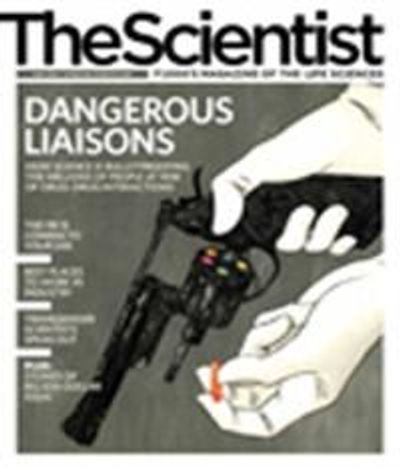Catch of the day

Even discriminating sushi connoisseurs would envy the tuna George Amato has sampled. The purpose of the tasty experiment: Use DNA barcoding to find out if threatened species of tuna are sold in the United States market.
Barcoding relies on a short fragment of mitochondrial DNA found in virtually all living things. The 650 base-pair region, part of the cytochrome oxidase I (COI) gene, accumulated mutations at a high rate during evolution, and can now be used to distinguish between many related species of animals or insects. “It’s one of the best species identifiers,” says Amato, director of the American Museum of Natural History’s Sackler Institute for Comparative Genomics. “Although tuna barcodes are a little more tricky.”
That’s because species of tuna are closely related, so their barcodes show little variation. While Amato has used barcodes to distinguish threatened gorillas, sea turtles,...
To answer this question, Amato’s graduate student set up a couple of dinner dates. PhD candidate Jake Lowenstein ordered tuna from 31 high-end restaurants and neighborhood sushi bars in New York City and Denver, then placed meat samples in a test tube. “Many of the meals were paid for by the supportive people who accompanied Jake to dinner,” jokes Amato. More than $2,000 was spent on 68 samples.
Back at the lab, the DNA extraction and sequencing processes went smoothly, but identifying the fish took more innovation. Scientists usually search indexes like GenBank and the Barcode of Life Database to match mystery meat sequences to known species. “We look to match the barcode sequence we get from our meat sample with at least 98 percent similarity,” says Amato. “The problem is that tuna are already right at this cut off.” While species of parrots, sharks, and other animals vary by 4–10 percent, a bluefin tuna may only differ from an albacore by 2 percent. This makes it hard to distinguish them.
To get around this problem, the team set statistical comparisons aside and began searching within the barcode for sites that characterized each species. “We had known samples of tuna, and were able to show that southern bluefin (Thunnus maccoyii) had unique identifying sites,” says Amato.
Northern bluefin (T. thynnus), yellowfin (T. albacares), albacore (T. alalunga) and other tuna could also be recognized by subsections of their DNA barcode. This allowed the team to conclusively identify the restaurant samples.
It turns out that one-third of the purchased tuna was threatened, including Northern and Pacific bluefin, which have both declined by more than 90 percent since the 1970s. Seven samples were identified as the critically endangered southern bluefin, which currently faces extinction.
While conservation groups warn consumers against ordering threatened tuna, the findings show this is easier said than done. More than half of the menus misrepresented the species name, calling threatened Northern and Southern bluefin “fatty tuna” or “tuna.” Other times, restaurants got the species name entirely wrong. Some samples were not even tuna, but escolar (Lepidocybium flavobrunneum)—a fish banned for sale in Italy and Japan for causing stomach upset. (PLoS ONE 4(11): e7866, 2009.)
The findings mark a bright future for a controversial technology. “The ability to easily identify specimens of the species in international trade with an existing tool would be helpful,” says David Morgan, Chief of the Scientific Support Unit at The Convention on the International Trade of Endangered Species (CITES).
This March, CITES delegates voted against a Northern bluefin trade ban, although protections may be introduced by fishery management organizations.
In the meantime, US regulators can tackle the misidentification of tuna on menus, says Amato. This spring, he will train Customs and Boarder Protection scientists to find fraudulent fish and other endangered meats. “As a museum we can’t prosecute consumer fraud, but barcoding can help regulatory agencies address the problem,” he says.
While taxonomists debate whether barcod ing should be used for classifying new species, critics are warming up to its uses in the meat trade. “For species discrimination, barcodes don’t always work properly,” says Karina Lucas of the Piracicaba, Brazil-based Escola Superior de Agricultura “Luiz de Queiroz.” “But we think barcodes could be very useful in cases of partially processed meat and seafood.”
Interested in reading more?
